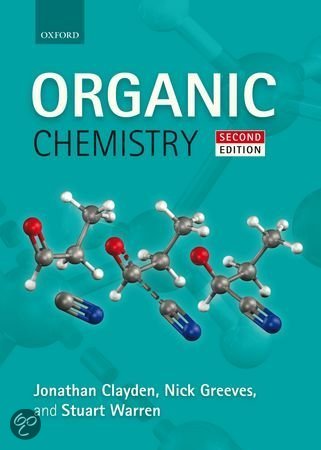
- ISBN
- Author(s)
- Language
- Publisher
- Edition
- Edition
Organic Chemistry notes (2nd edition)
Jonathan Clayden, Nick Greeves - ISBN: 9780199270293
- ISBN
- Author(s)
- Language
- Publisher
- Edition
- Edition
View all 38 notes for Organic Chemistry, written by Jonathan Clayden, Nick Greeves. All Organic Chemistry notes, flashcards, summaries and study guides are written by your fellow students or tutors. Get yourself a Organic Chemistry summary or other study material that matches your study style perfectly, and studying will be a breeze.
Best selling Organic Chemistry notes
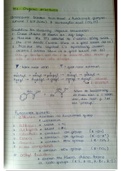
Dit is een handgeschreven samenvatting van het vak Organische chemie aan de VU. Het betreft de hoofdstukken 2, 4, 5, 6, 7, 8, 10 en 11. Ook zijn er handige tekeningen en opmerkingen in de samenvatting gezet. De samenvatting bevat zowel Nederlandse als Engelse stukken.
- Summary
- • 24 pages •
Dit is een handgeschreven samenvatting van het vak Organische chemie aan de VU. Het betreft de hoofdstukken 2, 4, 5, 6, 7, 8, 10 en 11. Ook zijn er handige tekeningen en opmerkingen in de samenvatting gezet. De samenvatting bevat zowel Nederlandse als Engelse stukken.
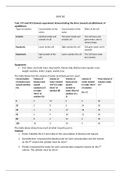
unit 16 assignment which is done up to high standard i have achieved overall DISTINCTION.
- Essay
- • 14 pages •
unit 16 assignment which is done up to high standard i have achieved overall DISTINCTION.

I got a 1st in my first year studying chemistry at the University of Birmingham using these revision notes that I have uploaded. They include detail on acidity, electron density and chemical reactivity, drawing reaction mechanisms, nucleophilic substitution reactions: the SN1 and SN2 reaction mechanisms and elimination reactions: the E1 and E2 reaction mechanisms. These summary notes also include worked examples as revision practice.
- Summary
- • 9 pages •
I got a 1st in my first year studying chemistry at the University of Birmingham using these revision notes that I have uploaded. They include detail on acidity, electron density and chemical reactivity, drawing reaction mechanisms, nucleophilic substitution reactions: the SN1 and SN2 reaction mechanisms and elimination reactions: the E1 and E2 reaction mechanisms. These summary notes also include worked examples as revision practice.
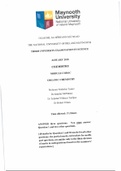
Includes answers for ALL questions in exam paper
- Exam (elaborations)
- • 10 pages •
Includes answers for ALL questions in exam paper
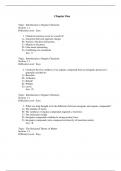
Test Bank For Organic Chemistry 2nd Edition Klein 9780199270293 | All Chapters with Answers and Rationals . Instant Delivery .
- Exam (elaborations)
- • 1442 pages •
Test Bank For Organic Chemistry 2nd Edition Klein 9780199270293 | All Chapters with Answers and Rationals . Instant Delivery .
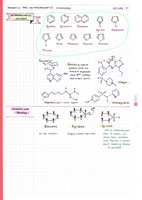
Lecture 7 of Aromatic and Heteroaromatic course at Durham University, hand written, neat diagrams
- Class notes
- • 1 pages •
Lecture 7 of Aromatic and Heteroaromatic course at Durham University, hand written, neat diagrams
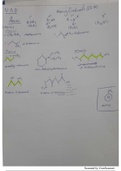
summary for chapter 19 and 20 for Organic 2. easy to memorize and to understand. It include lectures note and book information.
- Summary
- • 8 pages •
summary for chapter 19 and 20 for Organic 2. easy to memorize and to understand. It include lectures note and book information.
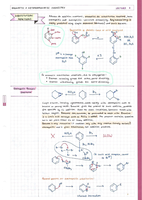
Lecture 2 of the Aromatic and Heteroaromatic course at Durham University, hand-written, neat diagrams.
- Class notes
- • 3 pages •
Lecture 2 of the Aromatic and Heteroaromatic course at Durham University, hand-written, neat diagrams.
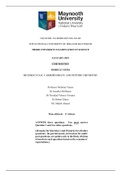
Includes 2019 CH326 exam paper and answers to all of section A and all parts of section B except peptide chemistry questions
- Exam (elaborations)
- • 9 pages •
Includes 2019 CH326 exam paper and answers to all of section A and all parts of section B except peptide chemistry questions
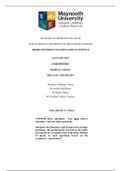
Includes 2019 January paper and answers
- Exam (elaborations)
- • 9 pages •
Includes 2019 January paper and answers
Do you have documents that match this book? Sell them and earn money with your knowledge!
Newest Organic Chemistry summaries

Includes answers for ALL questions in exam paper
- Exam (elaborations)
- • 10 pages •
Includes answers for ALL questions in exam paper

Test Bank For Organic Chemistry 2nd Edition Klein 9780199270293 | All Chapters with Answers and Rationals . Instant Delivery .
- Exam (elaborations)
- • 1442 pages •
Test Bank For Organic Chemistry 2nd Edition Klein 9780199270293 | All Chapters with Answers and Rationals . Instant Delivery .
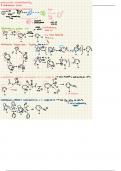
Mechanisms for Heteroaromaticity
- Summary
- • 9 pages •
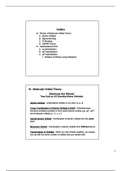
Simplified notes on organic chemistry, providing an in depth , complete & well written description.
- Study guide
- • 8 pages •
Simplified notes on organic chemistry, providing an in depth , complete & well written description.
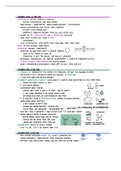
Textbook notes for exam one from Clayden textbook
- Class notes
- • 5 pages •
Textbook notes for exam one from Clayden textbook
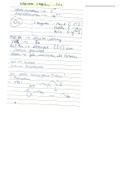
Alle mechanismes uitgewerkt die voorkomen in de volgende chapters van Clayden: 23,23,25,26,29,30. En belangrijke uitzonderingen
- Summary
- • 40 pages •
Alle mechanismes uitgewerkt die voorkomen in de volgende chapters van Clayden: 23,23,25,26,29,30. En belangrijke uitzonderingen
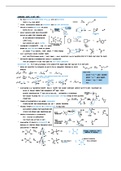
Clayden textbook notes for second exam
- Class notes
- • 7 pages •
Clayden textbook notes for second exam

Includes 2019 January paper and answers
- Exam (elaborations)
- • 9 pages •
Includes 2019 January paper and answers
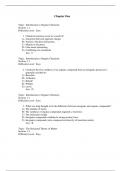
Test Bank For Organic Chemistry 2nd Edition Klein 9780199270293 | All Chapters with Answers and Rationals . Instant Delivery .
- Exam (elaborations)
- • 1442 pages •
Test Bank For Organic Chemistry 2nd Edition Klein 9780199270293 | All Chapters with Answers and Rationals . Instant Delivery .
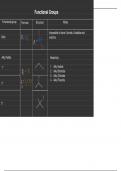
This chemistry summary contains the content covered in each chapter as well as questions at the end of each chapter from real tests and tutorials to sharpen your chemistry knowledge. This document can be a crucial tool in your chemistry 214 academic success with the easy representation of principles.
- Summary
- • 50 pages •
This chemistry summary contains the content covered in each chapter as well as questions at the end of each chapter from real tests and tutorials to sharpen your chemistry knowledge. This document can be a crucial tool in your chemistry 214 academic success with the easy representation of principles.
Do you have documents that match this book? Sell them and earn money with your knowledge!
Why study with the book summaries on Stuvia?

Relevance, efficiency and convenience. These are important elements when studying or preparing for a course or exam. Studying with the help of book summaries, which are linked to the ISBN number of your (study) book, is more relevant than ever. Your fellow students or tutors are sharing their knowledge to help you prepare for your exams. Find the ISBN number of your book and you'll be sure to buy the right summary. That way you won't be faced with surprises during your exams.

All summaries on Stuvia are written by students who have already taken the exam, lecturers who teach the study material or professional publishers. As a result, you can be confident that you will understand the course material more easily and that the summary contains all elements that are tested in the exam. Find the book you need to study by its ISBN and choose the best textbook summary.
